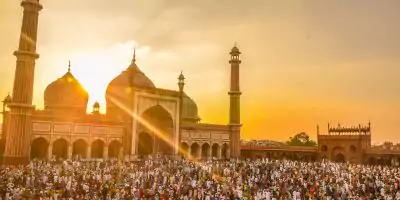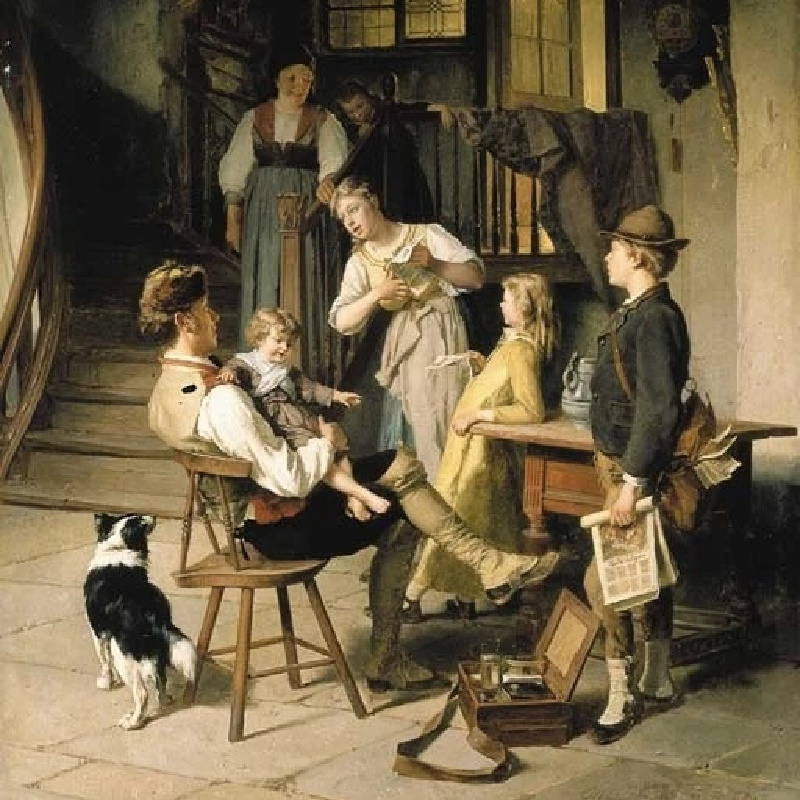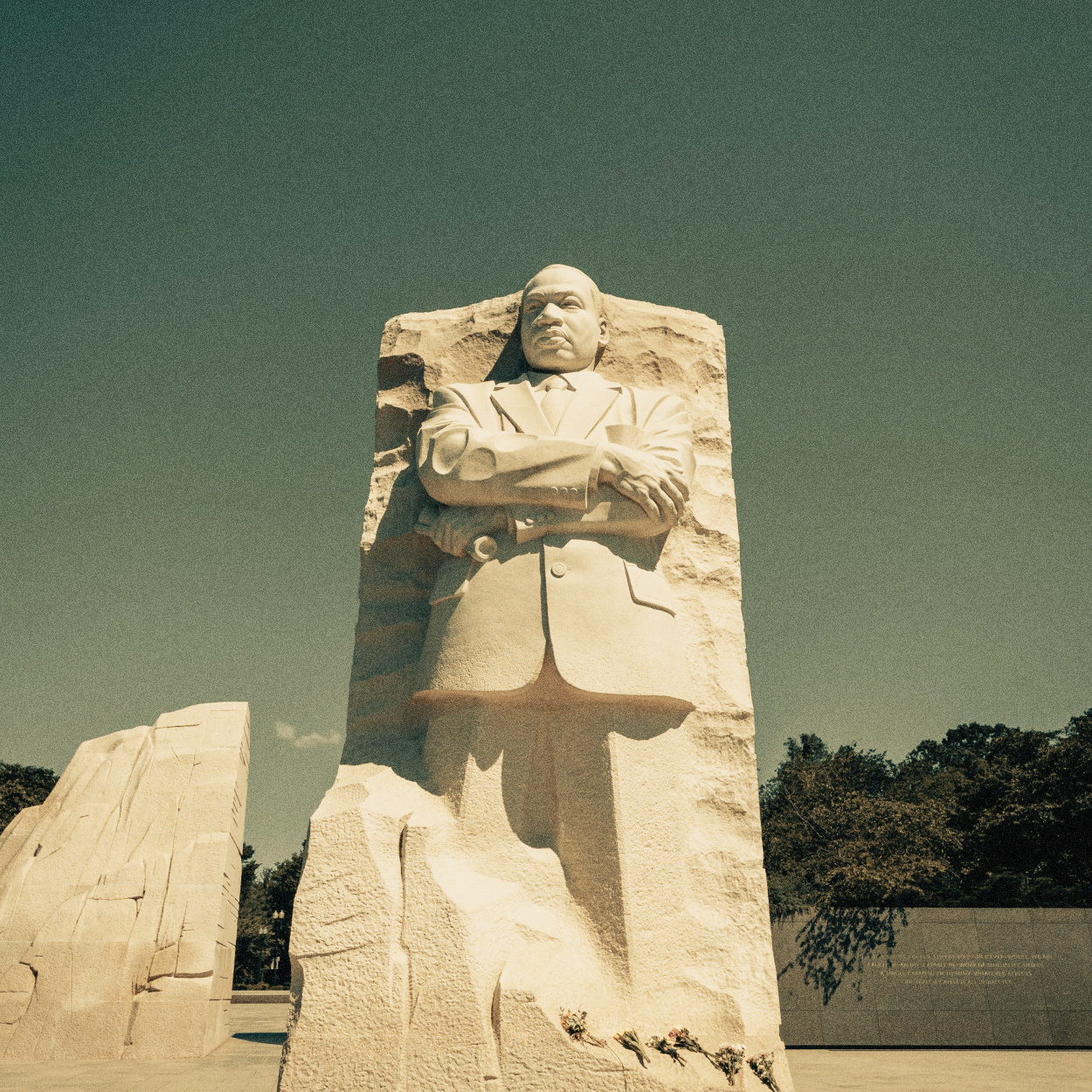Daniel Frost
I was impressed with the emphasis on humility, taught by (at least) Presidents Oaks, Holland, and Johnson. In an age characterized by political polarization and contempt, humility can be a healing balm for ourselves and our relationships with others. The more we are certain that “we” are right and “they” are dishonest, immoral, and unintelligent, the less we are capable of seeing how we might be contributing to the problems we say we want to solve. In the United States at least, humility is a virtue in very short supply.
But humility is a virtue because its antithesis—pride—always blinds us to truths about ourselves, other people, the world, and God. Pride redirects our vision from the world as God created it and puts it in the service of self-aggrandizement and self-justification. When we are prideful, we cannot keep the first great commandment: “Thou shalt love the Lord thy God with all thy heart, and with all thy soul, and with all thy mind” (Matthew 22:37). Pride is ultimately unsatisfying, for we were made for self-giving communion with God and others, not self-satisfied self-admiration. As Augustine said long ago, with reference to God, “Thou hast made us for Thyself, and our hearts are restless till they rest in Thee.”
Christopher Cunningham
Throughout the conference, I was taken by the repeated remarks teaching that wholeness, healing, peace, and joy are possible even amid personal hardship, spiritual disappointment, or Church-related wounds. In setting the framework, President Dallin H. Oaks reminded listeners that “Some may say, ‘The Church didn’t meet my needs.’ If that applies to you, please understand that it is not the mission of the Church to meet all your needs. It is the mission of the Church to invite all to come unto Jesus Christ and be perfected in Him.” While this may sound austere, it echoes a core teaching across conference: the source of healing is not in focusing on the source of the pain, but the source of healing—a perfect Redeemer. Elder Uchtdorf gently acknowledged pain caused, encouraging patience with “the gap between the ideal and the real.” In his telling, the path to joy can come from unity—a focus on direction toward the Savior. President Camille N. Johnson taught that this path is available even for those who do not have healing as an option but can still achieve wholeness. Using the story of the ten lepers, she taught that one can be “whole in Christ” even while waiting for emotional or physical relief. For Latter-day Saints who feel marginalized, disappointed, or hurt, this doctrine offers both balm and direction.
What emerges from these teachings is a discipleship that embraces struggle as a sanctifying space. Elder Gerrit W. Gong testified that Jesus weeps with us and that His Atonement offers not only forgiveness, but restoration—healing estrangement, reconciling relationships, and overcoming injustice. Others pointed to real-world examples of faith amid adversity: Elder Neil L. Andersen spoke of unwed mothers, adoptive families, and those recovering from moral failure, each sustained by the grace of Christ and the strength of a loving ward, and Elder John A. McCune added illness, job loss, and infidelity to the list of wounds suffered. Elder Benjamin M.Z. Tai perhaps gave the most straightforward advice when he said, “We can consistently experience God’s love when, through the grace of Jesus Christ, we repeatedly repent, frankly forgive, strive to keep His commandments, and selflessly serve others.” And Elder D. Todd Christofferson brought the path to focus in his remarks focused on worship. He taught that “True worship is transformative” and that it, “means loving God and yielding our will to Him.” In all, the message is both tender and demanding: healing is real, but it often comes through consecrated endurance, covenant loyalty, and ongoing faith in Jesus Christ—even when, and especially when, His people fall short.
Carol Rice
This General Conference weekend found me surrounded by “littles”—young children whose energy, curiosity, and love for “conference weekend” filled the home with joyful chaos. Their usual excitement was heightened by the arrival of a brand new baby sister—just one week and a day old as conference began. Attention spans competed with enthusiasm, but sweet moments came in bursts—small pockets of stillness where a testimony or story on the screen captivated everyone’s focus. We grow—not in perfection, but in participation.
In the early hours of Sunday, filled with my own burst of conference energy, I started a batch of cinnamon rolls—something I’ve done many times before. But this time, I wasn’t in my own kitchen, and the process took longer than expected. My granddaughter wanted to help. At first, I explained gently that I was behind and could do it quicker on my own. She persisted, and her sweet, imploring eyes softened me. We worked together, sticky fingers and all. Later that morning, Elder Steven D. Shumway’s words reached straight to my heart:
“We engage in God’s work, not because God needs us, but because we need God and His blessings.”
Just as my granddaughter was eager to help, though I could’ve finished faster alone, God lovingly allows us to participate in His work. Not because He needs our expertise—but because He knows what it will make of us.
Elder Shumway reminded us that “God does not expect perfect performance or exceptional talent to participate in His work.” He invites us, calls us, and transforms us through that very process. We grow—not in perfection, but in participation. I’m so thankful He lets me help.
This conference was a reminder to me—and, I hope, to every tired mom, every young dad balancing babies on laps, every older soul feeling overlooked, and every person whose family life looks different than expected—that we are seen. We are important. We are participating. We are building His kingdom, right where we are, and often in quieter, messier ways than we imagined.
At the heart of my own weekend, was the privilege of witnessing my son and daughter-in-law live this truth. Their diligence in the middle of tired nights and bustling days, their faithful effort to create a home where the Spirit could be felt, became a sermon of its own. It was full of love, even if it wasn’t flawless. It wasn’t quiet—but it was sacred. And in the midst of imperfection, I was able to be part of something divine.
We are living the gospel. Not perfectly—but in doing so, we are becoming like Him.
Abram N. Maitar
Elder Uchtdorf’s talk told the story of a woman observing––when attending her first meeting of The Church of Jesus Christ of Latter-day Saints––how “beautiful” everyone treated each other regardless of their backgrounds. Elder Uchtdorf expounded the principle that God does not “look upon” our Earthly characteristics, but instead “looketh on the heart” (1 Samuel 16:7). Elder Renlund explained Christ gave three characteristics of those who are prepared to meet Him, whether at His Second Coming or at the end of our mortal lives: they accepted His truth, have not been deceived, and served His children (Mathew 25). It is true Christ has clarified, “By this shall men know that ye are my disciples, if ye have love one to another” (John 13:35).
Recently, an article I edited for Public Square began to open my heart and mind by expounding on worshipping the Lord through service. The principle of service has always seemed to me like a limb to the body or a pillar in the structure of the Gospel. I am changing to understand The Gospel as an integrated system of worship (to continue with the analogy) with service more like blood of the body, or a material used in a structure like wood or stone. I believe God is calling me to worship Him more concertedly through service. I seek to follow the path of Christ, “who went about doing good”.
Amanda Freebairn
The theme of joy in Jesus Christ, which was prominent in October’s General Conference, continued to stand out to me the last two days. Elder Bednar spoke of the joy of the restoration and living in the dispensation of the fullness of times. “Prophets, priests, and kings have … looked forward with joyful anticipation to the day in which we live, and fired with heavenly and joyful anticipation have they sung and written and prophesied of our day.” The restoration of the gospel, he said, is the “most important and glorious good news any person, anywhere in this world, can ever receive. “ The signs are here. The work is real, and “The hour of redemption is near.”
Gale Boyd
Elder Uchtdorf made a point that is important for us as Latter-day Saints. Most of us assume that Zion, being the “pure in heart,” will be a situation where everyone sees eye-to-eye with one another, but Elder Uchtdorf clarified this prophecy. Alma, in the Book of Mormon, Alma 36:26, said:
For because of the word which he has imparted unto me, behold, many have been born of God, and have tasted as I have tasted, and have seen eye to eye as I have seen; therefore they do know of these things of which I have spoken, as I do know; and the knowledge which I have is of God.
Alma saw eye-to-eye with God, as did others. We still have our weaknesses but have an eye single to the glory of God. With everyone in Zion having an “eye single,” our relationships with one another will be transformed. Said Elder Uchtdorf,
“God envisions a people who are “of one heart and one mind.” To be of one heart, we
must seek pure hearts, and that requires a mighty change of heart.
But that doesn’t mean changing my heart to align with yours. Nor does it mean changing
your heart to align with mine. It means we all change our hearts to align with the Savior.
If we are not there yet, remember, with the Lord’s help, nothing is impossible.”
Hannah Rice
There’s nothing like that pure, joyful, post-temple-announcement feeling. It’s hard to describe, but impossible to miss. Every time President Nelson lists new temples, it hits me again—this is God’s Church. The Restoration is real. Heaven is still moving. Each new temple feels like a personal reminder that Christ is rolling His gospel forward to every corner of the earth.
“As children of Zion, good tidings for us. The tokens already appear.”
The signs are here. The work is real, and “The hour of redemption is near.”
The hour of redemption really is near. It’s not just a hopeful phrase—it’s prophecy unfolding before our eyes. We are living in a sacred time. The work is accelerating. God is gathering Israel. He is preparing the world. And we get to be part of it.

















